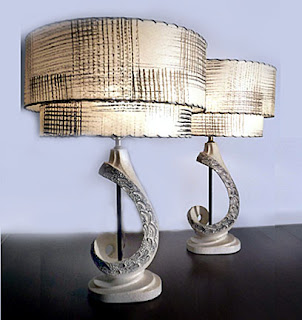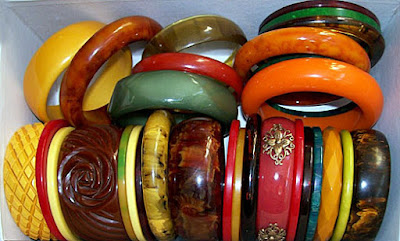 QUESTION: After the death of my mother, I’ve started to clear out my parent’s house to get it ready for sale. Among the items I’ve been sorting through were a good number of what I believe were things from the 1950s. Since I was only a small child during that time, I’m really not exactly sure what is from back then. Can you give me an idea of the type of things that might have some resale value and where I might sell them?
QUESTION: After the death of my mother, I’ve started to clear out my parent’s house to get it ready for sale. Among the items I’ve been sorting through were a good number of what I believe were things from the 1950s. Since I was only a small child during that time, I’m really not exactly sure what is from back then. Can you give me an idea of the type of things that might have some resale value and where I might sell them?
ANSWER: The 1950s were a time of relative prosperity after the end of World War II. However, items from back then fall into two categories—higher end pieces like futuristically designed furniture and accessories and everyday items like kitchen and household wares. And collectors are pretty much divided into these two groups, also.
 Many people, especially younger ones, view the 1950s as a time of carefree happy days. The T.V. show “Happy Days” did a lot to help that a long. But, in fact, the decade was filled with rules and restrictions, the result of which caused the backlash among younger people in the 1960s. But recently collectors have been resurrecting and rediscovering the era, albeit while wearing rose-colored glasses.
Many people, especially younger ones, view the 1950s as a time of carefree happy days. The T.V. show “Happy Days” did a lot to help that a long. But, in fact, the decade was filled with rules and restrictions, the result of which caused the backlash among younger people in the 1960s. But recently collectors have been resurrecting and rediscovering the era, albeit while wearing rose-colored glasses.
However, the 1950s was a decade of creative solutions and bold designs. Objects once outdated, corny and embarrassing, whose final resting place was yard sales and thrift stores, are now found in pricey shops in major cities. This serious second look from dealers,. collectors and architects transcends all the outlandish fads, weird shapes, silly ideas and annoying colors. What they’re now seeing are progressive designs and superb workmanship, mostly on the high-end pieces.
 Transitional best describes the Fifties decade. America was passing out of the dark, serious, wartime 1940s into a colorful era of discovery, experimentation, and prosperity. Veterans were starting families in the suburban developments like Levittown in both Long Island and southeastern Pennsylvania. Mom’s found themselves bound by their apron strings in the kitchen while dads went off to work. Dwight Eisenhower led the country while Willie Mays and Mickey Mantle dominated centerfield. And automobiles were large, showy, and powerful.
Transitional best describes the Fifties decade. America was passing out of the dark, serious, wartime 1940s into a colorful era of discovery, experimentation, and prosperity. Veterans were starting families in the suburban developments like Levittown in both Long Island and southeastern Pennsylvania. Mom’s found themselves bound by their apron strings in the kitchen while dads went off to work. Dwight Eisenhower led the country while Willie Mays and Mickey Mantle dominated centerfield. And automobiles were large, showy, and powerful.
Designers, fueled by the exploration of outer space, applied the graceful, soft curves and lines of Art Deco to furniture and appliances, which took on streamlined, futuristic shapes. When the Russians launched the world’s first satellite, Sputnik, in October 1957, merchandise that resembled sleek spacecraft seemed all the more apropos for the times.
 News broadcasts came over Bakelite and C radios that sported rounded, curved lines and often bold coloring. Designers adopted shiny chrome for lamps, table and chair legs, blenders, toasters, and waffle irons. Tubular steel added simplicity, beauty and durability to furniture and accessories. Lighting fixtures and clocks sprouted appendages resembling sparkling celestial bodies or satellites.
News broadcasts came over Bakelite and C radios that sported rounded, curved lines and often bold coloring. Designers adopted shiny chrome for lamps, table and chair legs, blenders, toasters, and waffle irons. Tubular steel added simplicity, beauty and durability to furniture and accessories. Lighting fixtures and clocks sprouted appendages resembling sparkling celestial bodies or satellites.
For the growing middle class, manufacturers employed chrome's step-sister, aluminum, to mass-produce inexpensive tumblers, goblets, cocktail shakers, trays and ice buckets. Plastic, especially red, could be found in most kitchens in condiment containers and curtains. Cabinets contained Fiesta ware, simple, pastel-colored dishes for everyday use.
 Decorative figurines became popular. No living room was complete without a black ceramic panther slinking on a tabletop or used as a lamp base. Small ceramic lamps with a doll, animal, or other figure, marketed as the perfect little glow to set atop the TV, supposedly helped to save viewers’ eyesight in darkened rooms.
Decorative figurines became popular. No living room was complete without a black ceramic panther slinking on a tabletop or used as a lamp base. Small ceramic lamps with a doll, animal, or other figure, marketed as the perfect little glow to set atop the TV, supposedly helped to save viewers’ eyesight in darkened rooms.
Coffee tables assumed the shape of boomerangs. Wall clocks looked like exploding, atoms or models of molecular structure. Kitchen tables, made of durable Formica in bright red, yellow, and often turquoise, complemented shiny white enamel hanging cabinets. Builders of new suburban homes tiled the bathrooms in black and pink or sea green.
 In the better part of towns, a sophisticated 1950's home might contain a pair of Eero Saarinen's all-enveloping womb chairs in bright red, or had as its piece de resistance a free form, walnut and glass coffee table designed by Isamu Noguchi.
In the better part of towns, a sophisticated 1950's home might contain a pair of Eero Saarinen's all-enveloping womb chairs in bright red, or had as its piece de resistance a free form, walnut and glass coffee table designed by Isamu Noguchi.
Baby boomers, looking to recall items with which they grew up, have fueled the current interest in what’s now commonly referred to as the Mid-Century Modern style—taking in the 1950s and 1960s. They perceive the Fifties as an innocent time compared to now.
Manufacturers designed products for the Machine Age, using mass-production and assembly line methods. Thus, many of today’s collectors seek pieces developed by specific designers whose creations bring higher prices.
Charles Eames worked for the Herman Miller Company of Zeeland, Mich. He popularized furniture made of laminated plywood and bentwood. George Nelson, also of Herman Miller, designed clocks and furniture. Paul Frankl designed furniture from the 1920s to the 1950s. Influenced by Art Deco, he used both geometric and curved shapes. His simple, black and white, curved lacquered pine tables and desks today sell for several thousand dollars each.
 Knoll International of New York employed Eero Saarinen. Best-known for his molded plastic womb chair, he worked also in cast aluminum. Italian immigrant and sculptor Harry Bertoia also designed for Knoll, where he pioneered in using metal rods and wire in side and lounge chairs. And Gilbert Rohde, also associated with the Herman Miller Company, combined traditional mahogany and maple with chrome and glass.
Knoll International of New York employed Eero Saarinen. Best-known for his molded plastic womb chair, he worked also in cast aluminum. Italian immigrant and sculptor Harry Bertoia also designed for Knoll, where he pioneered in using metal rods and wire in side and lounge chairs. And Gilbert Rohde, also associated with the Herman Miller Company, combined traditional mahogany and maple with chrome and glass.
Russel Wright worked in glass, plastics, aluminum, textiles, pottery and furniture. He designed tableware for the Steubenville Pottery Company, Iroquois China Company, and Harker Chinaware. And he developed furniture for Knoll and Heywood Wakefield.
Unlike painters, these artists didn’t sign their work, so collectors need to learn to identify furniture by shapes, materials, and quality of workmanship. Although the furniture usually had manufacturer data on paper labels, many of the labels have long since fallen off.
 Other companies mass-produced less expensive look-alike imitations of designer furniture. And the U.S. courts refused to allow the original designers to legally. protect their work, which further complicated matters.
Other companies mass-produced less expensive look-alike imitations of designer furniture. And the U.S. courts refused to allow the original designers to legally. protect their work, which further complicated matters.
Fifties merchandise sells consistently well, especially chrome kitchen appliances, decanters, cake covers and lazy Susans. During the 1990s, items from the 1950s was cheap by today’s standards. But as the popularity of these items has grown, so have the prices. Aluminum Christmas trees, illuminated by a revolving color wheel, are a good example. Once castaways, they now sell for over $150.
And while Fifties kitchen appliances are still popular with collectors, especially if they’re in excellent condition, the market for them has softened somewhat. However, colorful Bakelite and Catalin radios still sell for three figures.
 As far as selling items from the 1950s, both eBay and Etsy are probably the best bet. Selling them at yard or garage sales or fleamarkets won’t really yield much of a profit. Regardless of the site, the Internet offers a global market with the possibility of selling at higher prices.
As far as selling items from the 1950s, both eBay and Etsy are probably the best bet. Selling them at yard or garage sales or fleamarkets won’t really yield much of a profit. Regardless of the site, the Internet offers a global market with the possibility of selling at higher prices.
The consensus among dealers today is that a lot of 1950s furnishings sit in attics, basements, and thrift shops waiting to be purchased for a song by the wise buyer who has memorized the music. And that means that happy days may be making comeback.
To read more articles on antiques, please visit the Antiques Articles section of my Web site. And to stay up to the minute on antiques and collectibles, please join the over 30,000 readers by following my free online magazine, #TheAntiquesAlmanac. Learn more about "Advertising of the Past" in the 2023 Spring Edition, online now. And to read daily posts about unique objects from the past and their histories, like the #Antiques and More Collection on Facebook.
































